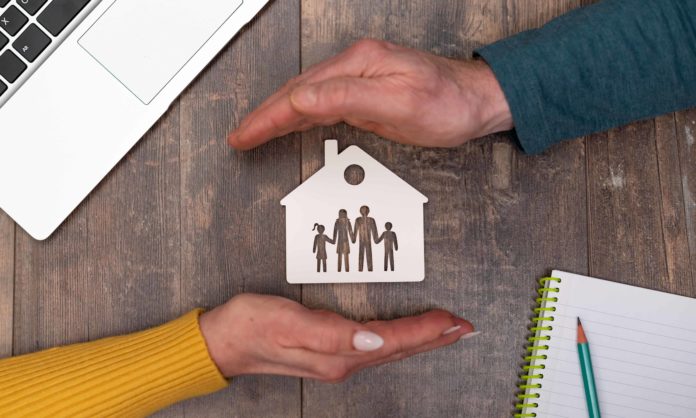One of the biggest fears the average American can have these days is not being able to keep up with housing costs.
Thankfully, the federal government has several housing assistance programs available to those in need, each one designed to meet the specific needs of individuals and families.
Finding a housing situation that fits your budget can be challenging but know that you’re not alone.
If you meet the requirements, the options available to you may offer some financial assistance.
Defining affordable housing
“Affordable“ is a very loose term, and it varies from person to person, especially in this economy.
Despite it meaning so many different things to different people, a concrete definition of it, in terms of housing, does exist.
The HUD defines it as no more than 30% of one’s income, with this percentage accounting for utilities.
With this, households spending more are considered to be cost-burdened, which makes handling other expenses much more difficult.
If someone’s monthly income is $15k, they would consider a housing option up to $4.5k as affordable.
On the other hand, if a person makes $3k a month, there’s a lot less options on the market as the housing cost shouldn’t be greater than $900.
When you’re starting your search for affordable housing, you must first do a proper assessment of your financial situation.
There are affordable housing opportunities that the federal government made available. They are:
Each of these options has its own eligibility requirements and qualifications, and you should examine each of them thoroughly.
Public Housing
The HUD provides the option of public housing alongside the other affordable housing opportunities they offer.
The program aims to provide affordable rental housing to qualifying low-income families.
Even though public housing is a federal program, local agencies manage it.
These housing agencies (HAs) also manage the housing units that the program provides, while also evaluating applicants.
Depending on the area you’re in, the eligibility requirements may vary, although there are some general factors to look out for.
The HAs running the program will generally look into your:
- Household status
- Yearly income
- References
- Citizenship standing
Despite all of this, your local agency still has the right to deny you access to the program.
The application program is surprisingly simple, and you can apply for the program at your state agency’s office.
If you can’t contact the local HA, you can contact the local HUD office instead.
Housing Choice Voucher Program
This program provides housing vouchers to qualifying families.
These vouchers cover a portion of the total expense the family would have so that they typically only pay 30% of their income for housing.
As it stands though, these vouchers only apply to properties that accept them as a valid form of payment.
However, even if the landlord does accept this form of payment, they must still pass a strict inspection done by the Public Housing Agency.
Even though the HUD provides the program, the PHA manages it at a local level.
Much like the previous program, the eligibility requirements still vary depending on the area.
The local agency will still go over these 4 categories when determining if you qualify for the program or not:
- Income
- Eviction history
- Citizenship
- Household
Supportive Housing
This program doesn’t necessarily fall into what is considered federal housing assistance, but it’s an option worth looking into.
At times, a family may need any form of housing at all, rather than just affordable housing.
This is where supportive housing jumps in, as it includes:
- Rapid Re-Housing
- Permanent Supportive Housing
- Transitional Shelters
- Emergency Shelters
Rapid Re-Housing
This option is what’s considered a “first solution” for those in need of housing right away.
It aims to provide families in need with assistance as soon as possible.
With RRH, even those individuals that don’t normally deal with homelessness can benefit from the government’s support services.
These can often include case management and financial assistance for a limited amount of time.
The program defines the status of the previously mentioned persons as “non-chronic homelessness“.
Permanent Supportive Housing
At times, some individuals may have a hard time consistently having a place to call home.
This is defined as dealing with chronic homelessness, and these persons can benefit from the PSH program.
The US Department of Housing and Urban Development defines a chronically homeless individual as one who:
- Stays in emergency shelters
- A person is considered to have stayed in an emergency shelter if they didn’t change habitation for at least one year. It also applies if they stayed at a shelter at least 4 times over the course of 3 years, amounting to one full year.
- Frequents the local safe havens
- “Frequenting” a safe haven means that a person spent a full year at one, or a total of one year on at least 4 separate occasions in a 3 year period.
- Lives in institutional care facilities
- Habitation in institutional care facilities is defined as a minimum of 90 days spent at a facility. An additional requirement is having proof of previous habitation at shelters or safe havens.
- Lives in spots not meant for human habitation
- Living in spot not meant for humans is defined as a full year spent at one such object, or a full year split into a minimum of 4 separate occasions.
PSH doesn’t aim to provide permanent housing for these individuals, but rather assists them in finding their own as soon as possible.
Long-term housing can be a pain to find in today’s market, especially for someone who is chronically homeless.
Transitional shelters
This option aims to provide a more long-term solution than standard shelters do, although it is still a temporary one.
The time a person can spend in one of these shelters can vary depending on the shelter, and it’s usually between 6 and 24 months.
Much like the other options, transitional shelters also provide their users with supportive services focused on their health and well-being.
These services aim to assist those in need with mental and physical health, employment, and much more.
Emergency shelters
These shelters are intended for families and individuals that require immediate housing assistance.
Even though the option doesn’t provide long-term housing, it is stable enough to help get these individuals back on their feet.
The end goal of these shelters is to help people find a long-term housing option that fits their financial plan.
Once again, the maximum amount of time a person can spend in one of these shelters can vary, and it mostly depends on the specific shelter.
Bottom line
It’s important to remember that you’re not alone in your struggles, especially if you’re dealing with housing issues.
There are thousands of other Americans currently experiencing the same thing, and these programs all aim to help them.
If you are in need of some housing support make sure you look at a variety of opportunities out there.
Whether local, state, or federal housing, there are lots of options.




